The History and Tradition of Spain's White Villages
Saturday, June 15, 2024
Nestled amidst the rugged mountain ranges and overlooking the lush valleys of Spain lie the enigmatic pueblos blancos, or white villages. Characterised by their dazzling white-washed walls, these villages are not only a testament to the nation's rich history but also display a unique blend of cultural influences. Central to these charming landscapes is the tradition of encalado de casas – the whitewashing of houses. This practice, deeply ingrained in the region's cultural fabric, has origins that are both practical and symbolic, affecting life within these homes in profound ways.
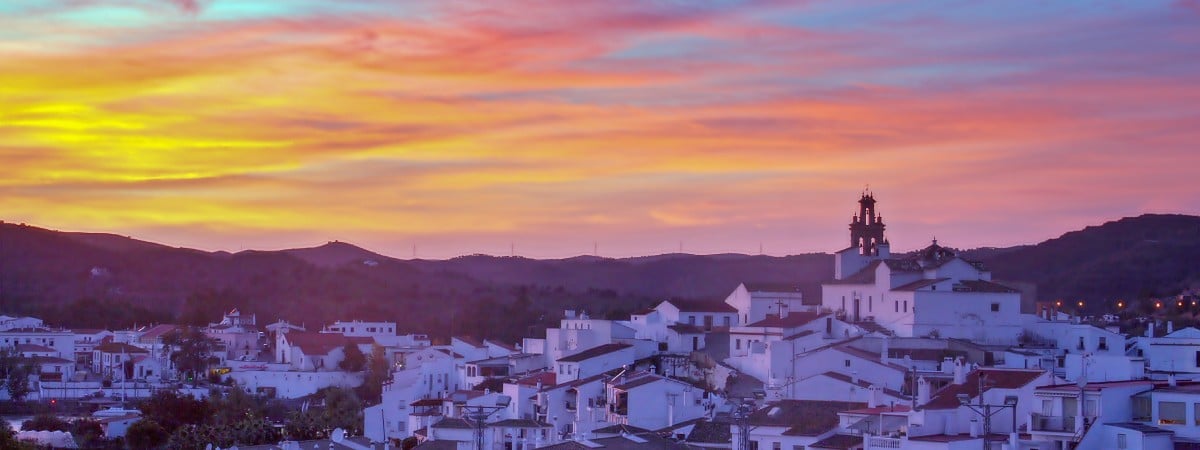
The tradition of whitewashing buildings in Spain can be traced back to ancient times, influenced by several different cultures over the centuries. Initially, it was the Phoenicians who introduced the technique to the Iberian Peninsula as a means of protecting buildings from the harsh Mediterranean sun. However, it was during the Islamic rule of Al-Andalus from the 8th to the 15th centuries that the practice became widespread in the southern regions of Spain, particularly Andalusia. The Moors valued the aesthetic and practical benefits of whitewashing and embedded it into the local architecture.
The act of encalado, or whitewashing, serves multiple functions, blending practicality with aesthetics. The primary reason homes were whitewashed was to reflect the intense sunlight, thus helping to keep the interiors cooler during the scorching summer months. This natural form of temperature regulation was essential in areas like Andalusia, where summer temperatures can soar.
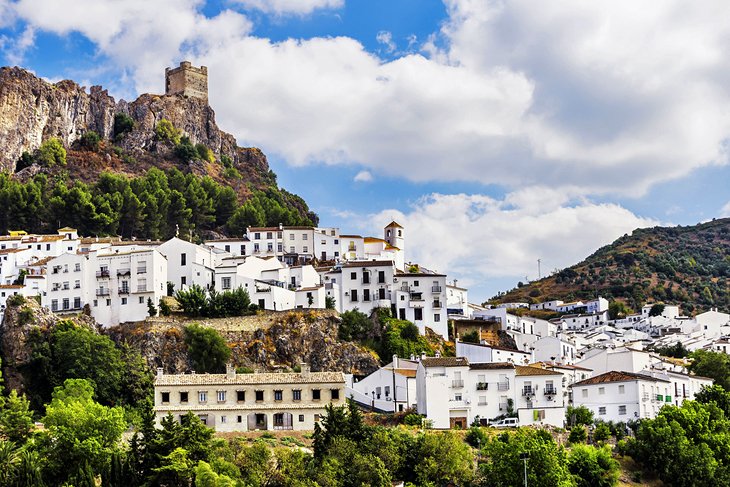
Moreover, limestone, the main component used in traditional whitewash paint, has antiseptic properties that helped to sanitize the environment. This was particularly beneficial in agricultural communities, where preventing the spread of disease was crucial. Whitewash also acts as a natural insect repellent, deterring pests from settling on the walls.
Aesthetically, the white walls lend a bright and airy feel to the villages, enhancing the natural beauty of the surroundings. The contrast between the dazzling white buildings and the blue sky, green fields, or deep orange of the setting sun creates breathtaking vistas that have charmed visitors for centuries.
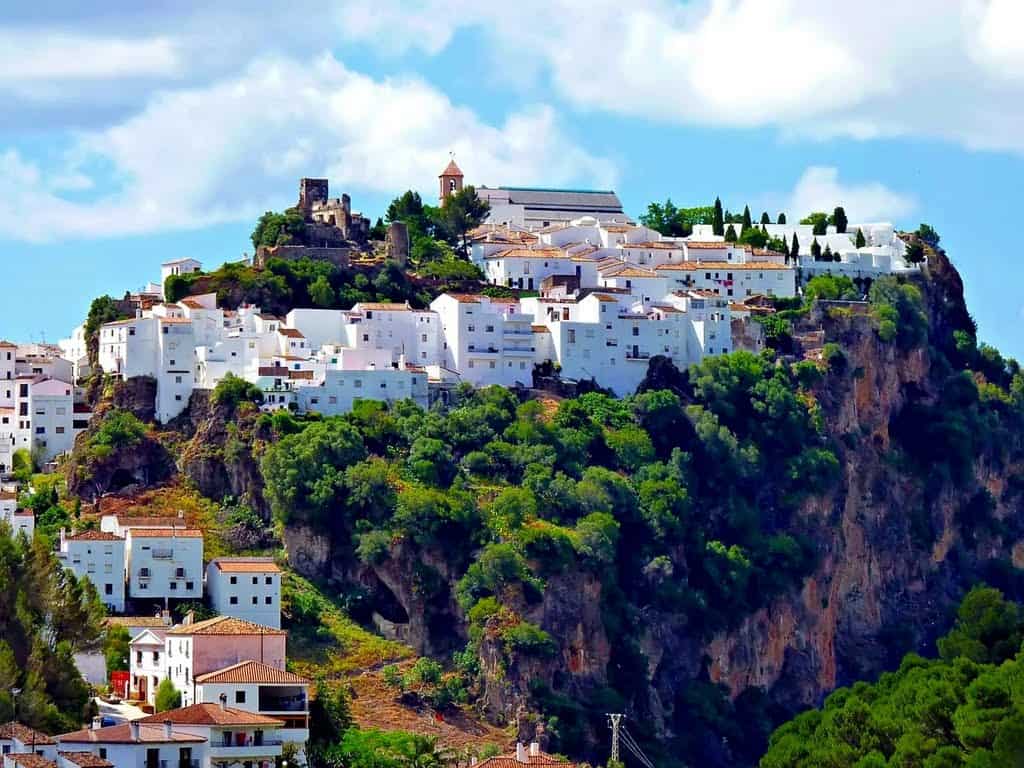
The whitewashing of houses extends beyond its practical benefits, holding a symbolic value that reflects purity, unity, and a sense of community identity. Villages often come together for the annual whitewashing, a tradition that fosters a strong sense of belonging and collective responsibility among the inhabitants. This communal activity is a time-honored ritual that passes down through generations, strengthening the cultural ties and preserving the unique heritage of the pueblos blancos.
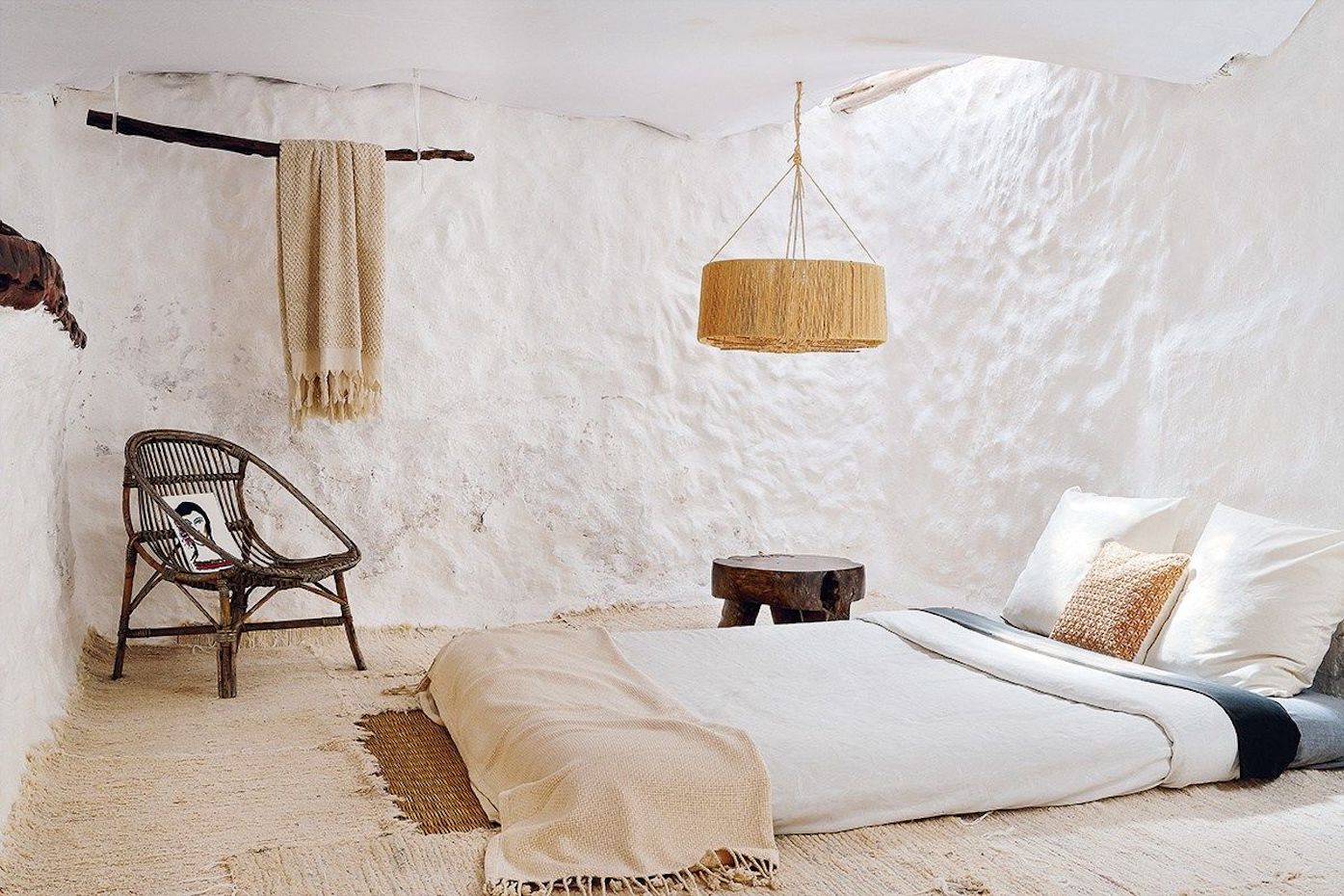
The impact of whitewashing extends into the interior of homes, significantly affecting the living conditions. The reflective properties of whitewashed walls enhance natural light within the home, creating brighter living spaces that feel open and welcoming. Additionally, the thermal properties help maintain a more consistent and comfortable indoor temperature, creating a cooler space in the summer and retaining warmth in the winter. This natural insulation improves the living conditions within the houses, making them more energy-efficient and comfortable year-round. It has been demonstrated to decrease the interior temperature in the summer by up to 10ºC.
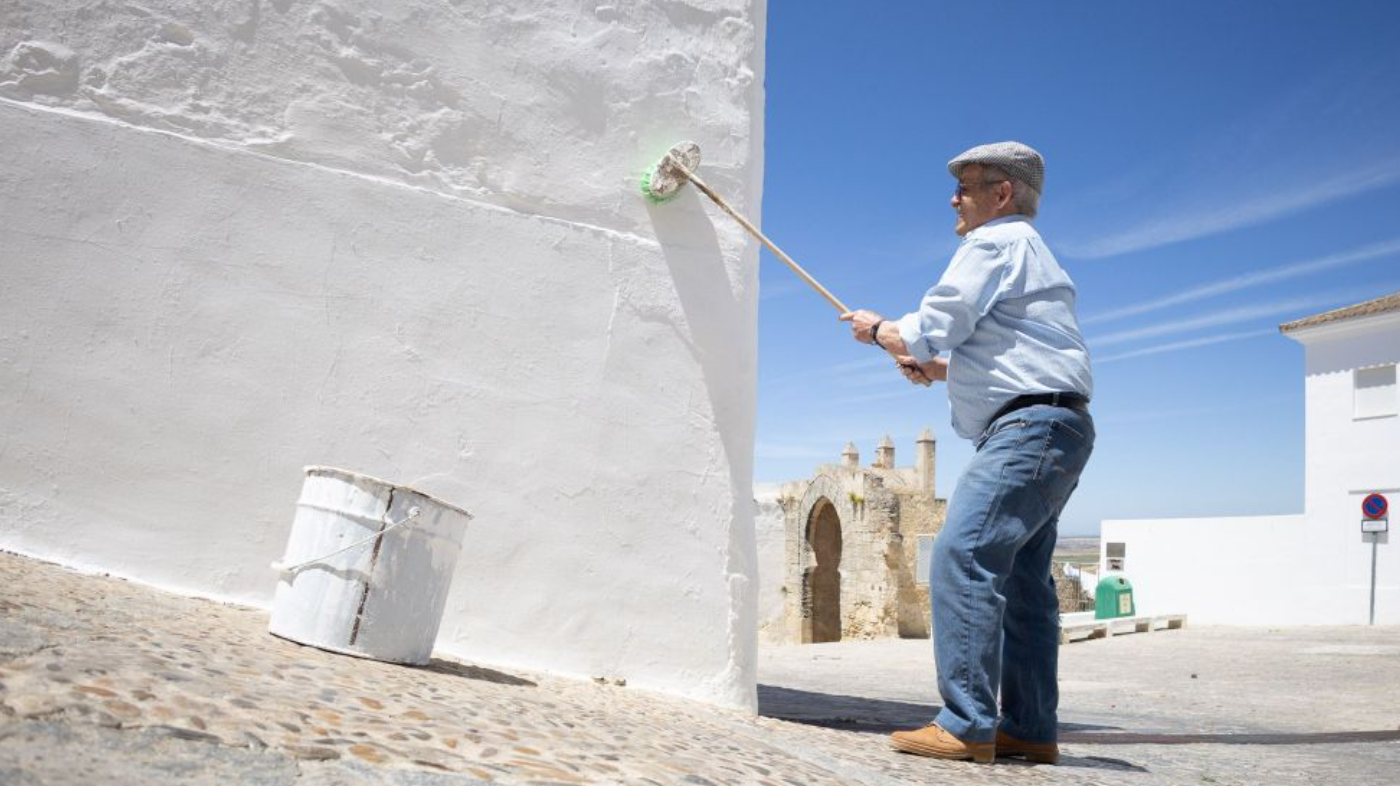
The tradition of encalado de casas in Spain's white villages is a remarkable blend of practical ingenuity and cultural expression. The whitewashed houses of the pueblos blancos are not only a visual treat but also a reflection of the country's diverse history and the adaptive genius of its people. As travellers wind their way through these picturesque villages, they are not only greeted by stunning landscapes but also by a living tradition that continues to shape the identity and lifestyle of its inhabitants. In the end, the whitewashed walls of Spain stand as silent witnesses to the past, while continuing to offer a timeless lesson in sustainability and community spirit.
 0
Like
Published at 6:05 PM Comments (2)
0
Like
Published at 6:05 PM Comments (2)
Do You Know Where the Largest Vineyard in the World is?
Saturday, June 8, 2024
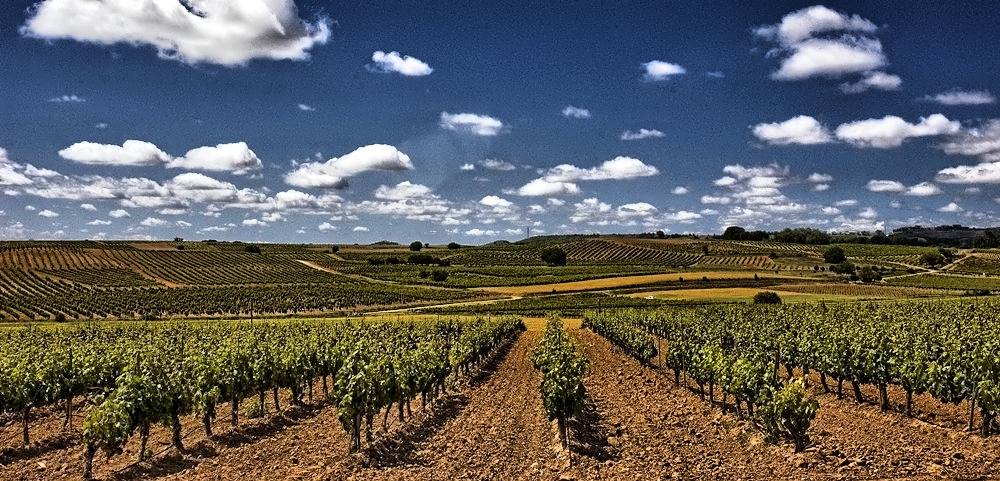
The region of Castilla La Mancha in Spain is the largest wine region in the world with around 500,000 hectares of vineyards within its area of production, of which only about 165,000 are able to produce wines with "designation of origin D.O”, it is one of the most important vineyards in Europe with DO. It represents 50% of all vineyards in Spain, 14% of all vineyards in Europe and 7% of all vineyards in the world.
La Mancha is an ideal area for growing grapes because the yield per hectare is not very high and is of premium quality. In addition, the health of their vines is extraordinary due to the long hours of sunshine they receive and their great ripening cycle.
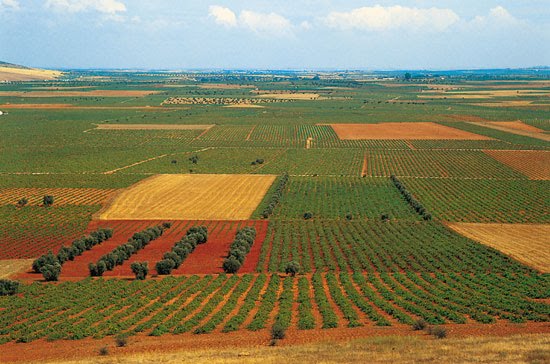 Moreover, the versatility of their land has enabled them to introduce a vast variety of grapes from around the world without any problems, complementing the indigenous grapes Airen and Tempranillo, whose quality has enabled sales to grow steadily in recent years. Moreover, the versatility of their land has enabled them to introduce a vast variety of grapes from around the world without any problems, complementing the indigenous grapes Airen and Tempranillo, whose quality has enabled sales to grow steadily in recent years.
La Mancha is a vast expanse of land that has a flat terrain, without great heights and with beautiful red Miocene sediments of limestone structure. Their temperatures are extreme due to its continental climate, ranging from the winter cold of -15 º to a stifling 45º during summer. Dryness is one of its most distinct characteristics, since its micro-climate prevents the entry of moist winds, presenting a low rainfall (300 to 400 mm per year), thus La Mancha is primarily dryland farming dependant on rainfall, although recent restructuring plans has expanded the number of drip irrigation farms. Moreover, La Mancha has more than 3,000 hours of sunshine a year to sear their grapes; hence it offers the best fruit which is bought mainly by the French after supplying national demand.
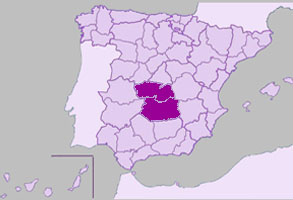 Although the documented origins of vineyards in La Mancha are dated to XII-XIII centuries after it repopulated in the times of Reconquista, some would argue that the vines from La Mancha date back to the Roman times. However, the cultivation of vineyards in La Mancha really started to expand around 1940, due to the start-up of many wine producers throughout the region. The wine is also the main economic activity of the municipalities of this región. These wines are the King of Spain’s favourite, originally the Crown of Spain had the first railway track built between Madrid and Ciudad Real just so the King could have a constant supply of wine. Although the documented origins of vineyards in La Mancha are dated to XII-XIII centuries after it repopulated in the times of Reconquista, some would argue that the vines from La Mancha date back to the Roman times. However, the cultivation of vineyards in La Mancha really started to expand around 1940, due to the start-up of many wine producers throughout the region. The wine is also the main economic activity of the municipalities of this región. These wines are the King of Spain’s favourite, originally the Crown of Spain had the first railway track built between Madrid and Ciudad Real just so the King could have a constant supply of wine.
 1
Like
Published at 11:29 AM Comments (0)
1
Like
Published at 11:29 AM Comments (0)
Discovering the Spiritual Heart of Catalonia: Montserrat Monastery
Saturday, June 1, 2024
Perched atop the serrated peaks of the Montserrat Mountains, the Montserrat Monastery stands as a beacon of spiritual and cultural significance in Catalonia, Spain. This historic abode of peace and contemplation is not merely a place of worship; it embodies the soul of Catalan culture and offers an unparalleled blend of natural beauty, art, and spirituality.

The story of Montserrat Monastery begins in the 9th century when hermit monks first settled in the Montserrat mountains, attracted by the solitary beauty of the peaks. However, the foundation of the monastery is traditionally attributed to the discovery of the statue of the Virgin of Montserrat, also known as 'La Moreneta' due to its dark colour, in a nearby cave in 880 AD. This significant find marked the beginning of Montserrat's journey as a place of pilgrimage.
The monastery has weathered the tumults of history - from expansions in the 11th and 12th centuries that laid down the Romanesque architectural foundation, to severe damage and rebuilding in the Napoleonic wars, and suppression during the Spanish Civil War. Through these vicissitudes, Montserrat has retained its spiritual essence and continues to be a haven for pilgrims and tourists alike.
The Monastery of Montserrat's architecture is a testament to the confluence of various styles, predominantly Gothic and Renaissance, harmoniously blending with the natural grandeur of its surroundings. The basilica, with its robust façades and ornate interiors, houses the venerated statue of La Moreneta, drawing pilgrims from around the globe to seek her blessings. The renowned atrium and cloister are masterpieces of art and architecture, reflecting the monastery's rich historical tapestry.
However, it is not just the basilica that captures the imagination. The monastic complex includes the Museum of Montserrat, home to an impressive collection that spans from ancient artefacts to modern paintings, including works by Caravaggio, El Greco, Dalí, and Picasso. This eclectic collection not only underscores the monastery's cultural significance but also its commitment to preserving art across ages.
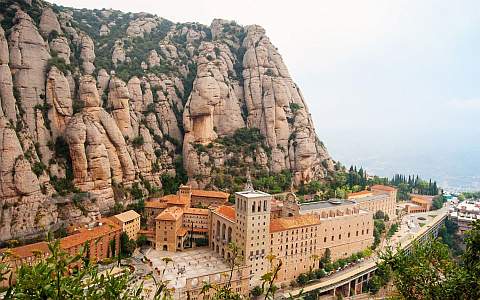
For centuries, the Montserrat Monastery has been a focal point of spiritual introspection and religious pilgrimage. The journey to the monastery itself is a ritual of reflection, whether one ascends the mountain by foot, car, or the iconic rack railway. The panoramic views and the serenity of the landscape prepare the heart and mind for a profound experience.
Visitors are often struck by the solemn beauty of the Basilica’s interior and the mystical aura surrounding La Moreneta. Attend a performance by the Escolania de Montserrat, one of the oldest boys' choirs in Europe, to experience an ethereal connection to the divine through their celestial hymns.
The 'Camí de l’Ave Maria' lined with votive candles, and the 'Santa Cova' (Holy Grotto), where the Virgin's statue was found, are integral parts of the pilgrimage, allowing one to tread the paths of faith that countless have walked before.
The Monastery of Montserrat's allure is magnified by the stunning landscapes that envelop it. The mountains of Montserrat, with their distinctive rock formations, have been sculpted by nature into shapes that stir the imagination. For the adventurous soul, the mountains offer numerous hiking trails that reveal breathtaking views and hidden hermitages. The mountain is also a hotspot for climbers, drawn by its challenging rock faces and the allure of reaching new heights.

The Llobregat River Valley below, with its lush foliage, contrasts the stark beauty of the rocky peaks, creating a tapestry of landscapes that change with the seasons. This natural beauty not only provides a backdrop for the monastery but is an integral part of the spiritual experience, reminding visitors of the wonder of creation.
Montserrat Monastery has always played a pivotal role in Catalan culture. Its library, once among the richest in Europe, has been a centre for learning and the Catalan language through the ages. The monastery and the Madonna have been symbols of Catalan nationalism, especially during periods of oppression. This intertwining of spiritual and cultural identities makes Montserrat a living monument to Catalonia's enduring spirit.

The Montserrat Monastery is more than a destination; it’s a journey into the heart of Catalan spirituality and culture. With its breathtaking settings, rich history, and spiritual significance, it offers a unique experience that transcends the ordinary. Whether you seek quiet contemplation amidst majestic natural beauty, an appreciation of art and history, or a journey of faith, Montserrat welcomes all.
This haven in the clouds invites you to explore its mysteries, immerse yourself in its serene beauty, and perhaps, find a piece of yourself among its ancient stones. Montserrat is not just a visit; it’s an experience that stays with you, calling you back to its sacred peaks time and time again.
 1
Like
Published at 10:45 AM Comments (0)
1
Like
Published at 10:45 AM Comments (0)
Discover the Majestic Torrent de Pareis: A Jewel of Mallorca
Friday, May 24, 2024
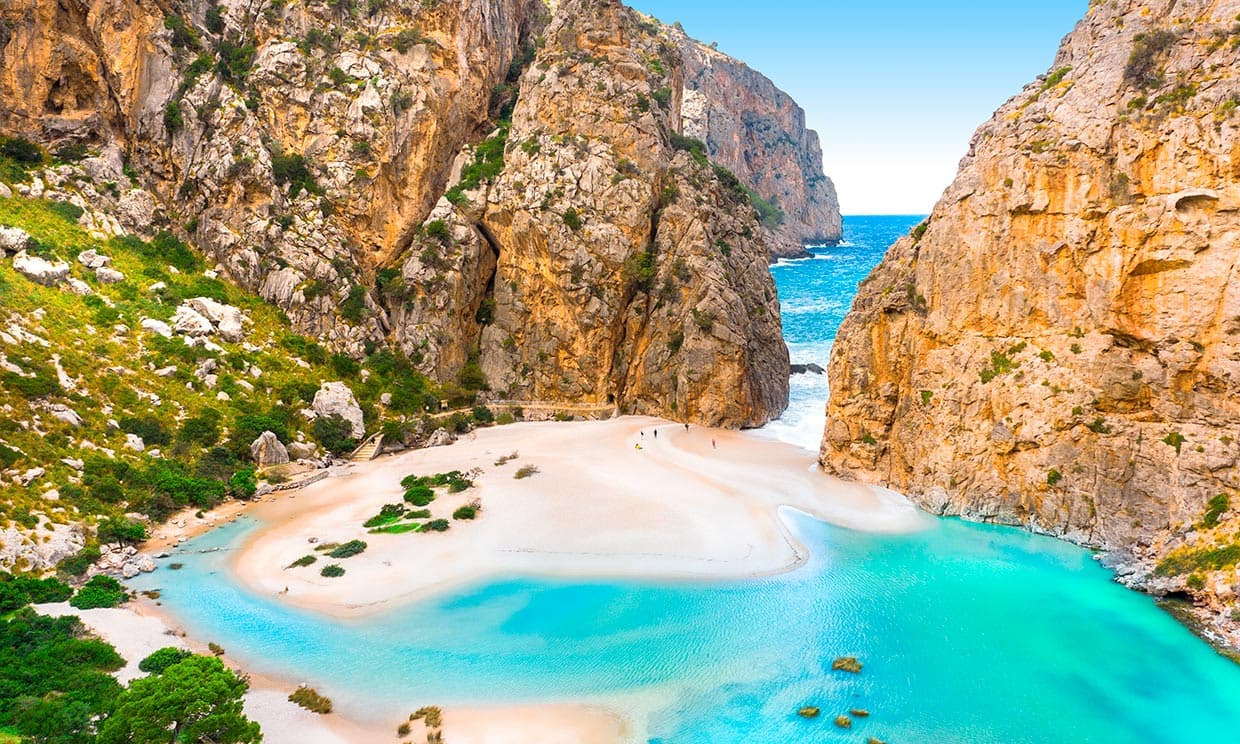
Nestled in the heart of Mallorca lies a wonder that has been carved by nature through millennia—the Torrent de Pareis. This stunning canyon, stretching for 3 kilometers and flanked by 200-meter high vertical walls, showcases the breathtaking power of torrential water working on calcareous rock over thousands of years. The Torrent de Pareis begins at S’Entreforc, a dramatic convergence point for two other torrents: the torrent of Lluc or Albarca and the torrent of Gorg Blau. In 2003, this extraordinary place was rightfully declared a National Monument, recognising its precipitous beauty and the unique ecosystem it supports.
The Entrancing Beauty of Sa Calobra
The natural mouth of the canyon opens up into Sa Calobra, a mesmerizing small bay adorned with round stones, nestled between two imposing mountains. This secluded spot offers a hidden beach and an awe-inspiring gorge, creating a picturesque setting that captivates the hearts of visitors. Despite the influx of tourists drawn by its renowned scenery, Sa Calobra retains its spectacular charm and remains a must-visit for anyone exploring Mallorca.
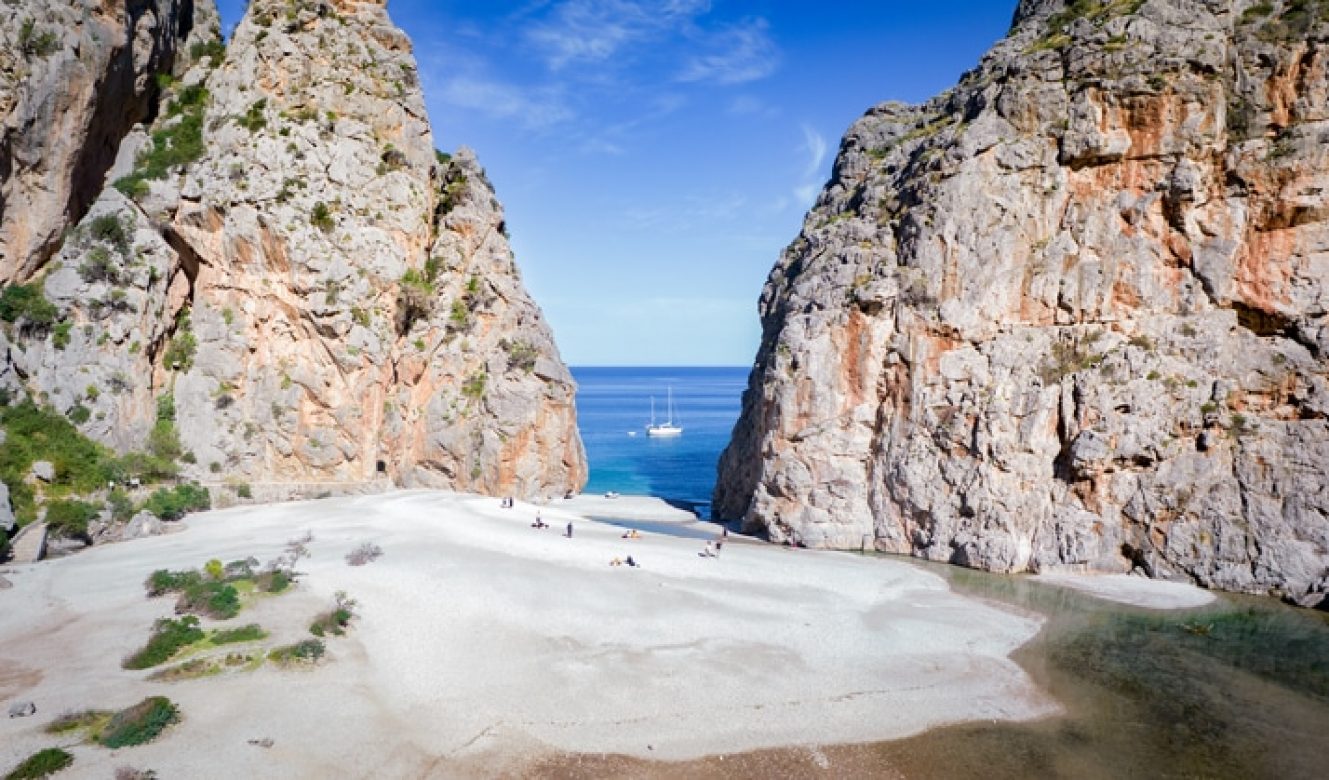
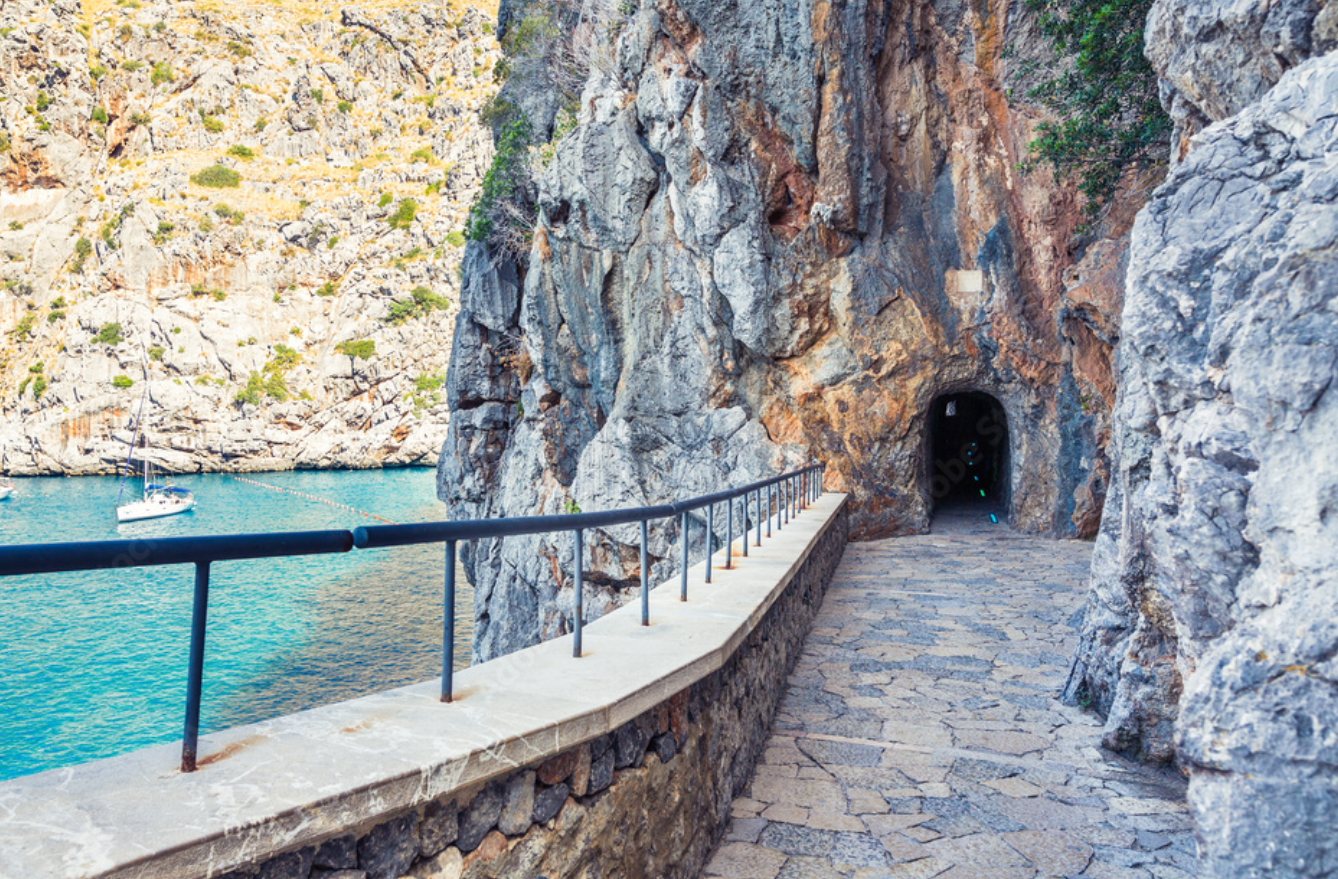
Reaching Sa Calobra is an experience in itself, featuring a journey that is as memorable as the destination. The road to this bay twists and turns around Puig Major, descending 800 meters in just 12 kilometres. It features a remarkable 270-degree turn that loops under itself, an engineering marvel known as the "Knotted Tie." However, for those seeking a more leisurely approach, a boat ride from Port de Soller offers an exceptional alternative. This route presents an unparalleled view of secluded bays and the majestic Puig Major, albeit marred slightly by military installations atop Mallorca's highest mountain.
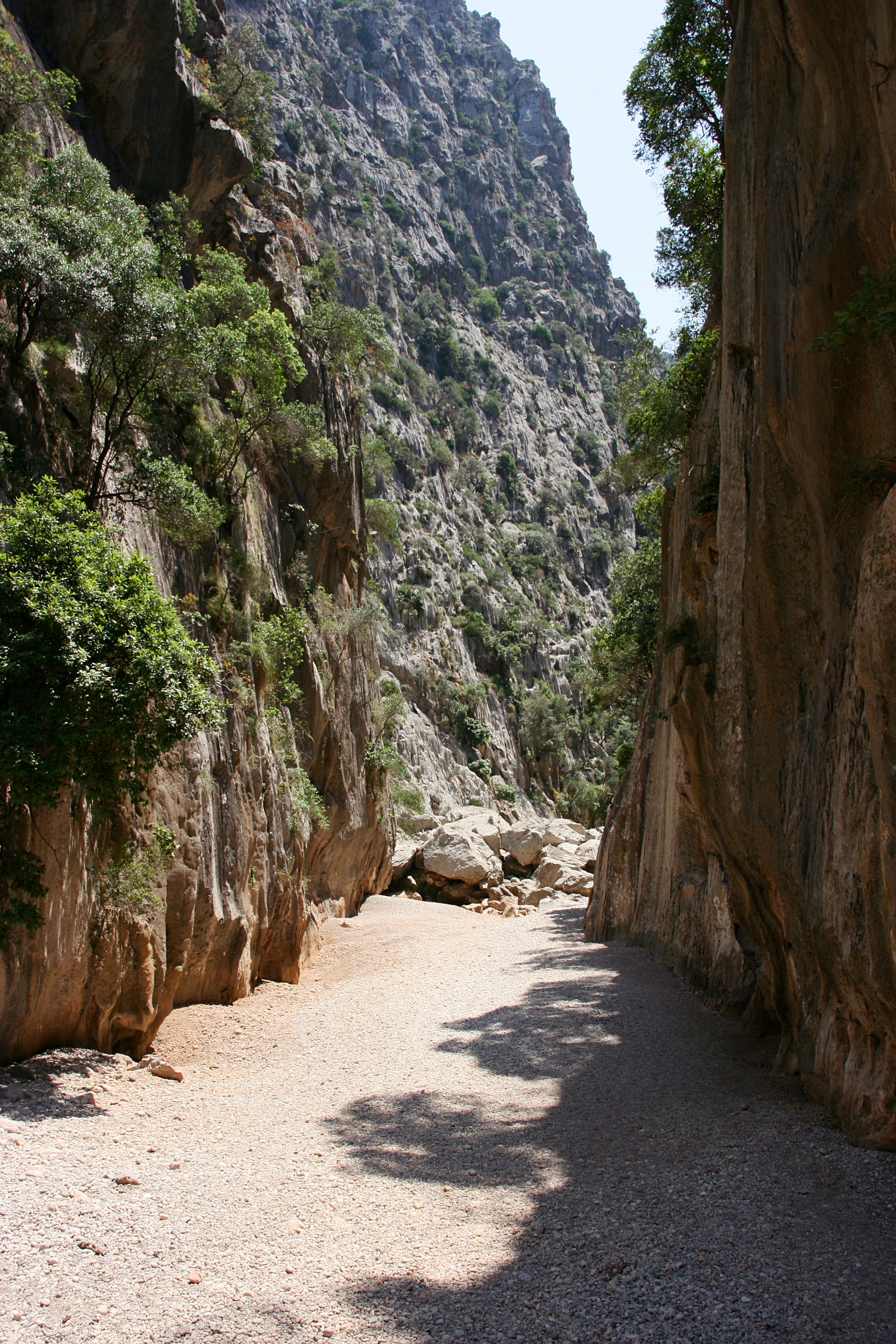
Exploring the Torrent de Pareis
Upon arrival, a short walk through 200m of tunnels unveils the gateway to the Torrent de Pareis, known for its "twin streams" originating high in the mountains from the torrents of Lluc and Gorg Blau. This dramatic gorge, up to 400 meters high and merely 30 meters wide in places, hosts sections that are perpetually shrouded in shadow, never kissed by daylight. The gorge concludes at a small beach, offering a serene spot for a picnic amongst fellow explorers. During the summer months, when the gorge is dry, adventurous souls can hike inland between the cliffs, an activity that is strongly discouraged during the wetter, more perilous winter months.
Cala Tuent: A Serene Detour
For those looking to escape the buzz of Sa Calobra, a side turn off the main road leads to Cala Tuent, a tranquil cove featuring a sandy beach backed by a verdant landscape. This cove is home to the 13th-century church, Ermita de Sant Llorenc, adding a touch of historical charm to the natural beauty of the area. Cala Tuent offers a welcome respite from the more frequented spots, with its enchanting blue-green sea promising a peaceful haven for visitors.
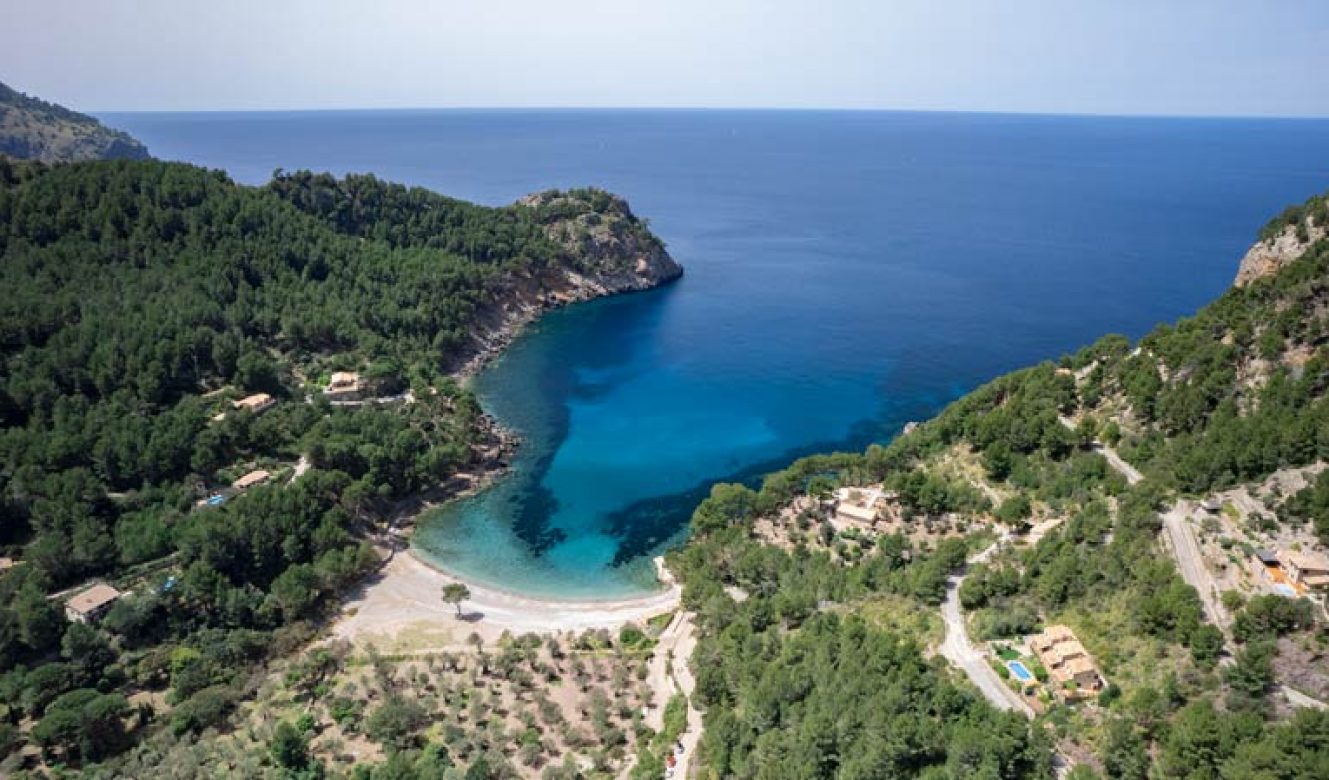
Tips for Visitors
When planning a visit to Torrent de Pareis and its surrounding marvels, here are a few tips to enhance your experience:
-
Best Time to Visit: The ideal time to explore the Torrent de Pareis is during the late spring to early autumn months when the weather is pleasant, and the gorge is dry. Summer offers the best conditions for hiking, but be prepared for larger crowds.
-
Safety First: Always check the weather conditions before setting off on a hike. The gorge can be dangerous during or after heavy rainfall.
-
Respect Nature: This area is a protected natural monument. Please respect the environment by not leaving any waste behind and by staying on designated paths.
-
Stay Hydrated: Bring along plenty of water, especially during the summer months when temperatures can soar.
-
Wear Appropriate Footwear: The terrain in and around the Torrent de Pareis can be challenging. Sturdy hiking shoes are a necessity for those planning to explore beyond the beach.
The Torrent de Pareis and its surrounding areas offer a compelling blend of natural beauty and adventure, making it a cornerstone of Mallorca's appeal to visitors from around the globe. Whether you're marvelling at the dramatic landscapes, navigating the winding roads, or enjoying the tranquillity of secluded beaches, a journey to this corner of Mallorca promises memories that will last a lifetime. So, when you next find yourself on this enchanting island, make sure to set aside a day (or more) to explore the mesmerizing Torrent de Pareis and its stunning environs.
 2
Like
Published at 9:22 AM Comments (2)
2
Like
Published at 9:22 AM Comments (2)
The Festival of San Isidro: A Deep Dive into Madrid's Most Cherished Celebration
Saturday, May 18, 2024
Madrid, the heart and soul of Spain, pulsates with vibrant traditions and cultural festivities, none more revered than the festival of San Isidro. This grand celebration, held annually on the 15th of May, is a splendid display of Madrileño pride and joy, offering a window into the city's rich history, sumptuous cuisine, and distinctive fashion.
The festival honours Saint Isidore the Labourer, the patron saint of farmers, and promises an array of activities that bring the entire city to life. In this article, we will explore the fascinating origins of San Isidro, dive into the traditions that define it, savour the typical foods and drinks on offer, and admire the unique styles and dress that contribute to the festival's colourful tapestry.

The story of San Isidro dates back to the 12th century and is rooted in the life and miracles of Isidore the Labourer, or San Isidro Labrador as he is known in Spanish. Born in Madrid, Isidro was a simple farmer who led a pious life, devoted to his faith and his work. Legend has it that angels were seen ploughing the fields alongside him, a testament to his holiness. After his death, numerous miracles were attributed to him, eventually leading to his canonisation by Pope Gregory XV in 1622.
It wasn't until 1212, however, that the first pilgrimage to San Isidro's hermitage took place, marking the beginning of what would eventually become the festival as it is known today. Over the centuries, this celebration has grown in size and scope, reflecting the enduring legacy of San Isidro and the deep spiritual and cultural significance he holds for the people of Madrid.
The festival of San Isidro is a multifaceted event that spans several days, encompassing religious ceremonies, lively parades, music concerts, and dance performances. One of the highlights is the pilgrimage to the Pradera de San Isidro, where Madrileños gather to pay homage at the shrine of their patron saint. Here, families enjoy picnics, and crowds are sprinkled with holy water blessed by the saint, a ritual believed to ensure good health and protection.
Another cornerstone of the festival is the offering of the meadow (Ofrenda de la Pradera), where devotees dress in traditional attire to present bouquets of flowers to the statue of San Isidro. This act of devotion fills the air with the fragrance of spring and colours the city in a vibrant floral palette.

The festivities also include the iconic "gigantes y cabezudos" (giants and big heads) parade, featuring large papier-mâché figures that dance through the streets, delighting children and adults alike.
No Spanish festival would be complete without a feast for the senses, and San Isidro offers a delectable array of traditional foods and drinks that embody the spirit of Madrid. Topping the list is the "cocido madrileño," a hearty chickpea stew with meat and vegetables, which is a staple of Madrileño cuisine. As families relax on the grassy meadows, picnic baskets brim with "tortilla de patatas" (Spanish omelette), "callos" (tripe stew), and "bocadillos de calamares" (squid sandwiches), creating a mosaic of flavours that tantalise the taste buds.

No celebration of San Isidro would be complete without sampling "rosquillas del santo," doughnuts that come in two varieties: "listas" (smart), which are smooth and glazed, and "tontas" (silly), which are plain. These sweet treats are often washed down with "limonada," a traditional lemonade spiked with wine and fruit, or a glass of "tinto de verano," a refreshing blend of red wine and lemon soda.
The festival of San Isidro is a visual spectacle, with Madrileños donning traditional attire that pays homage to the city's historical roots. Women wear the "chulapa" dress, a figure-hugging ensemble adorned with brightly coloured shawls, lace, and polka dots, completing the look with a white or lace mantilla worn over a high comb. Men, on the other hand, become "chulapos," sporting the "goyesco" style with chequered or plain caps, waistcoats, and neckerchiefs. This sartorial display is not merely about fashion; it is a proud declaration of identity and belonging, connecting the present to the past and weaving a shared cultural narrative.
As dusk falls and the city lights up, the Retiro Park and the Plaza Mayor become stages for traditional "chotis" dances, where couples whirl in tight circles, the women's skirts twirling in a blur of colour. The sound of "verbenas" (open-air dances) fills the air, inviting everyone to join in the revelry, united by music and dance.
The festival of San Isidro is more than just an annual celebration; it is a living tapestry of Madrid's history, culture, and community spirit. From its religious origins to its contemporary manifestations, it encapsulates the essence of Madrileño life, offering a feast for the senses and a testament to the enduring legacy of Saint Isidore. As we explore its traditions, culinary delights, and unique styles, we are reminded of the power of cultural festivals to bring people together, fostering a sense of belonging and shared joy. Whether you are a lifelong resident of Madrid or a curious visitor, the festival of San Isidro invites you to partake in its magic, promising an unforgettable experience that captures the soul of this magnificent city.
 0
Like
Published at 12:33 AM Comments (0)
0
Like
Published at 12:33 AM Comments (0)
The Legendary Fountain of Marriage
Saturday, May 11, 2024
The Basilica of Covadonga, alongside the sacred cave where pilgrims venerate the statue of La Santina (Our Lady), is a place of worship and pilgrimage for the people of Asturias. It is of neo-Romanesque style with two high towers flanking the main entrance. Nearby there is a spring which flows from the sacred cave and beneath there is a famous fountain with seven spouts and is a place of reference for all young ladies wanting to marry, a traditional local poem says:
"The Virgin of Covadonga has a spring very clear,
the girl who drinks from it,
will marry within a year."
According to the legend King Pelayo and other Asturian warriors fought the Arabs from a cave dug out of one of the rocky faces of the Covadonga Valley. The tale says that a little virgin appeared to Pelayo in the cave before the battle forecasting the victory of the Christians over the Muslims. A different legend also tells that before the battle with the Muslims the cave was probably used, about 1500 years ago, as a celebration and worshiping centre by a Celtic sorceress and as a holy meeting place for the Celtic tribes that lived in the area at that time. This would be the earliest divine origin of the Covadonga cave, used in the first place by pagan Celtic tribes for magical and spiritual practices. As in many other locations throughout the region, with time, the Christians took over the holy Celtic spaces to build their own churches and sacred places, and Covadonga was not an exception.
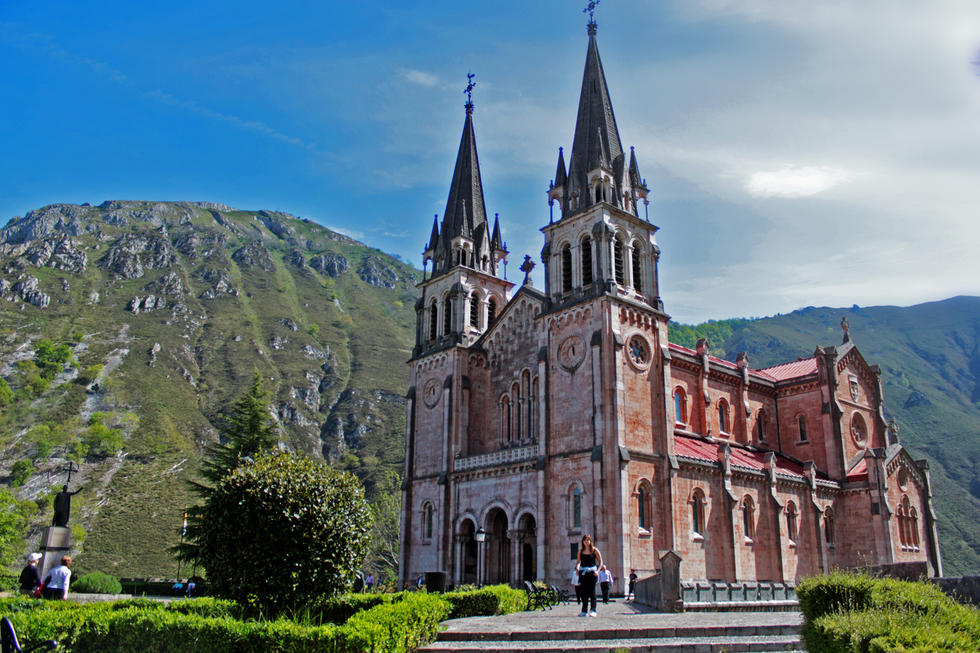
A Christian chapel was the first construction inside the cave and it was ordered by King Alfonso I The Catholic (739-757) as a memorial for the battle of Covadonga. Originally the Holy Cave chapel was wooden, until it and everything it contained, including the image of the Virgin, jewels and goblets, were lost in the fire of 1777. The image, which is there today, dating from the 16th century, was donated by the Chapel of Oviedo Cathedral in 1778 as compensation for the loss of the early Virgin. The Virgin known as The "Santina" is an image of Mary which forms an integral part of the Asturian tradition through history, through word of mouth from generation to generation, and through personal religious experiences. Deeply rooted in the people of this land, it constitutes one of the strongest and most powerful convocational symbols that the Asturians have. Its figure was carved, incarnated, gilded and polychromed from oak in the 16th century. She measures 71.4cm tall, including the pedestal, with a girth of 46 cm at her widest point, and a depth of 21 cm. The current baby Jesus was placed there in 1704. Standing out from her clothing is the mantle that Our Lady wears from her shoulders to her feet. Its colour changes according to the occasion. The normal mantle is a reddish-purple colour with a golden trimming and stamped with simple floral motifs.
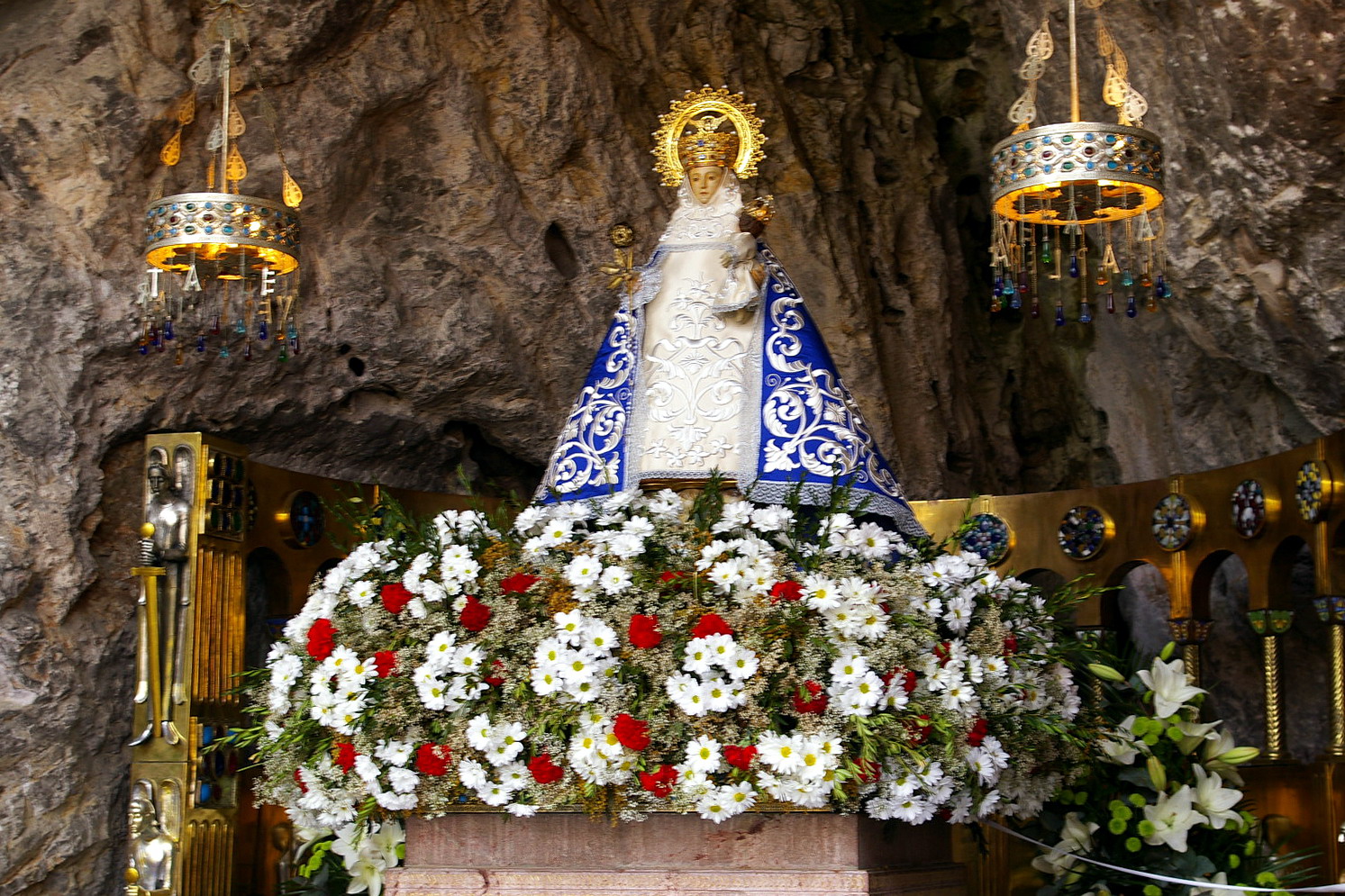
The chapel, which is to one side, was also reconstructed in stone, as it can be seen today. One can also find the tomb of Pelayo in the Cave, in front of the image of the Virgin.
Although he was originally buried in a nearby parish called Santa Eulalia de Abamia, his remains, along with those of his wife Gaudiosa and his sister, were later transferred to the Holy Cave where the tomb of Alfonso I and his wife Hermelinda (Pelayo"s daughter) is also kept, although slightly more hidden.
Behind the cave, in the guts of the mountain, an underground cascade runs free, and it reaches the outside world right underneath the cave, falling some 20 meters down into a natural water pool where pilgrims and visitors throw coins wishing for their dreams to come true.
After heavy rains or when the snow melts on the mountains the streams bulges with water and the sound of the waterfall is so intense that from inside the cave you can’t hear anything but the water crashing against the rocks and falling into the pool.
At one side of the pool you can find the seven-spout water fountain. Many Asturians still try to respect the tradition by going to Covadonga and drinking from all seven spouts before their marriage, just in case.
To access the cave there is a staircase leading up from the pool. It is not uncommon to see people going up the stairs on their knees because of a religious promise. The other way to access the cave is passing by the stone lions and following the road all the way up to the Basilica. Once at the Basilica there is a small pedestrian path that leads to a 30-metre tunnel carved out of the mountain and which is the antechamber of the Covadonga cave.
Silence and respect are demanded on the visit to the cave, especially when there is a mass on. It is a very similar atmosphere to Lourdes.
Many visitors from different regions and countries come every year to worship “la Santina”. Even Pope John Paul II made a very special visit to the Santina and to the Real Sitio of Covadonga in 1989, visiting also the Picos de Europa on his journey along the Camino de Santiago.
Roberto Frassinelli designed the basilica and the architect Federico Aparici Soriano erected it between 1877 and 1901. In 1777 a fire destroyed the old chapel that was by the Covadonga cave and it was then decided that they would build an eve more impressive structure. There was an initial project that was finally rejected because of its high costs and the opposition of local priests.
The definitive project was approved and launched by King Alfonso XII almost one century after the destruction of the original chapel. The initial project by Ventura Rodriguez with a classic design was finally replaced by the actual structure, which has a Romanesque style.
The original idea from the actual construction came from a German painter called Roberto Frassinelli, “el Alemán de Corao” that lived in the region. Architect Federico Aparici did the technical project, based on Frassinelli´s idea. The building sits over a large terrace and it has three different aisles. In the plaza in front of the basilica there is a 4 ton bell from 1900, a bronze statue of King Pelayo from 1964 and an obelisk from 1857, which according to the legend, stands at the place where King Pelayo was crowned.
The Covadonga Basilica was inaugurated on September 7th 1901, and Pope Leon XIII gave it the dignity of Basilica. It was built using pink limestone from the surrounding mountains. By the entrance portico there are two sculptures representing the two regional bishops started and finished the works. The inside of the basilica is famous because of its simplicity with just some decorative elements placed on the ceiling of the Basilica. Beside the high alter there are two large paintings of Madrazo and Carducho that represent the Battle of Covadonga and the proclamation of Pelayo as King of Asturias.
Beneath the high altar there is a "pit" with the relics of San Melchior and Pedro Poveda. To the left there is an altar dedicated to San Melchior, the only Asturian Saint, canonized by Pope John Paul II in 1989. Due to their economical contributions to the building of the basilica, flags from all South American countries are permanently shown.
Despite the many fires, the Museum of Covadonga still keeps very valuable and unique pieces. The crown of the Virgin of Covadonga is a very valuable piece of jewellery created by Felix Granda Buylla in 1918. It is made of gold with diamonds, rubies, sapphires and pearls. This crown is only used during the Covadonga celebration day, on September the 8th.
At the museum we can admire drawings from the basilica construction project done by the architect Ventura Rodriguez (the project that was rejected and replaced by the actual structure) as well as an impressive painting of King Pelayo. Pieces of jewellery, an ivory Christ from the XVI century donated by King Felipe II and ancient liturgical clothing together with other pieces of ancient art can also be contemplated and enjoyed within the museum. Nearby you will also be able to enjoy some of the most beautiful countryside Spain has to offer with breathtaking views of the Picos de Europa and some of the most beautiful lakes in Spain.
Ver mapa más grande
BEST TIME TO VISIT : ANY TIME OF YEAR
 3
Like
Published at 10:44 AM Comments (0)
3
Like
Published at 10:44 AM Comments (0)
Game of Thrones in Spain: Zafra Castle
Saturday, May 4, 2024
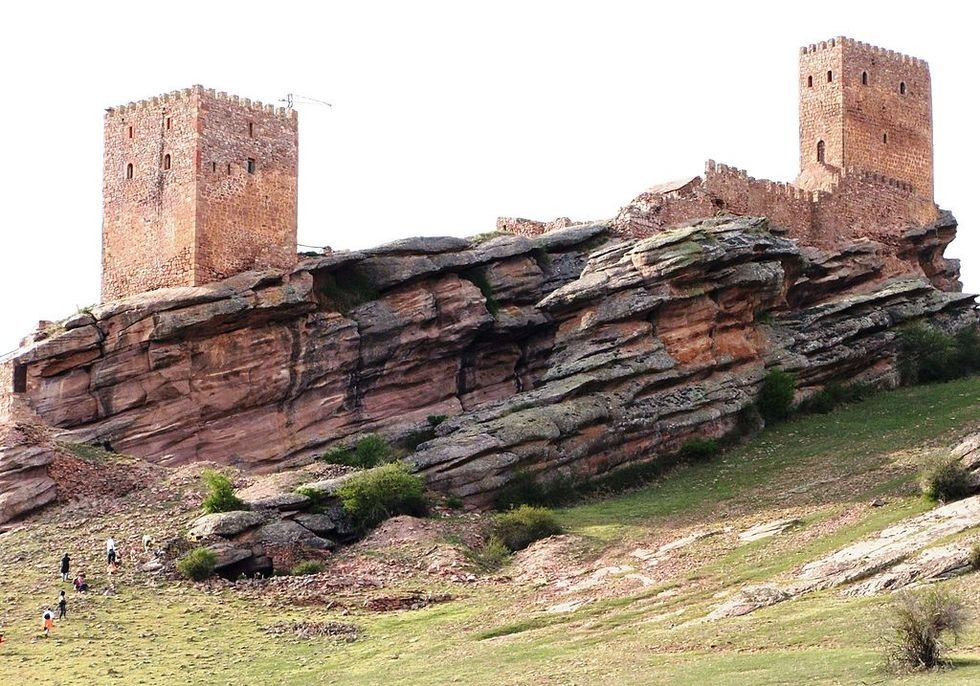
Like something out of a J.R.R. Tolkien fever dream, Spain's Castillo de Zafra sits atop a regal promontory in a setting that may as well be populated with roaming dragons. It is in fact the stand-in for the "Tower of Joy" in season six of Game of Thrones.
Built back around the 12th and 13th centuries, the stunning castle has been passed around amongst the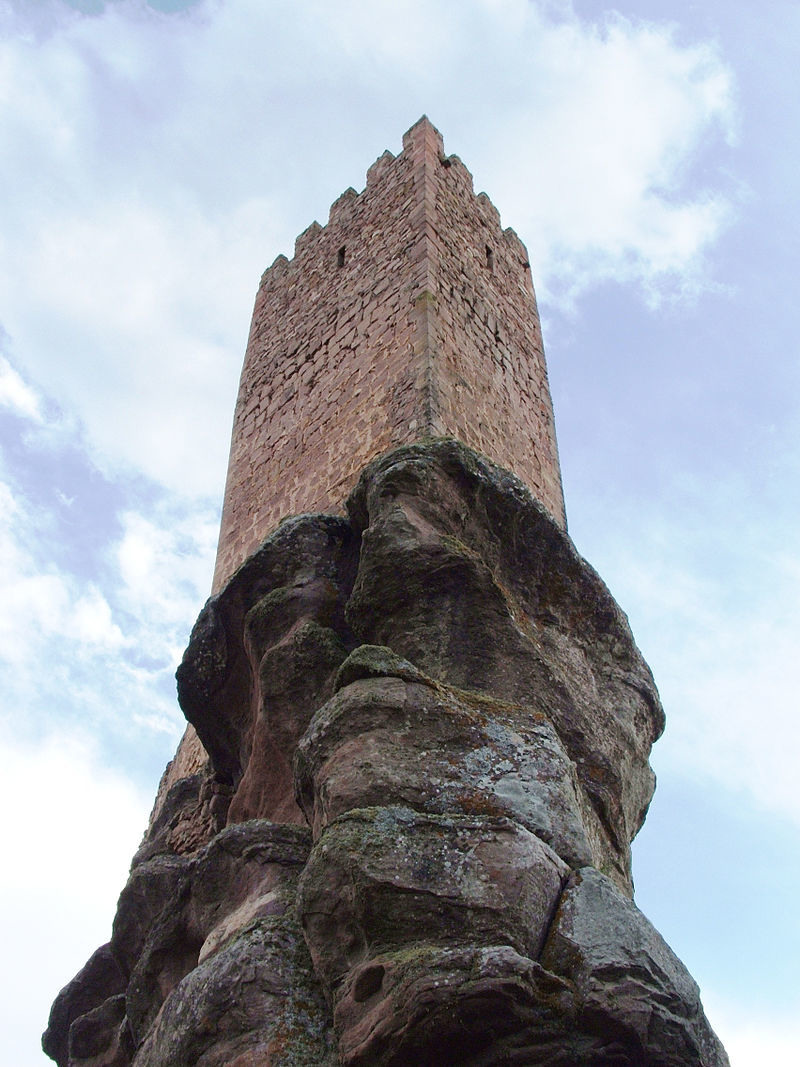 Spanish nobility for hundreds of years. The tall towers of the castle sit atop a massive rock located on what was once the border between Christian and Muslim territories. The flat surface atop the rock is crowned with a high defensive wall that makes accessing the castle inconvenient even for those who live lived there. Spanish nobility for hundreds of years. The tall towers of the castle sit atop a massive rock located on what was once the border between Christian and Muslim territories. The flat surface atop the rock is crowned with a high defensive wall that makes accessing the castle inconvenient even for those who live lived there.
By the 15th century, the castle had come under siege by a Castillian king who was fighting with the then owner of the castle. But unsurprisingly the imposing defence held.
The castle has been owned by a long list of noblemen, some of whom repaired or expanded the grounds. There are even rumours of secret rooms that were carved into the rock beneath the structures. While these have never been found, Castillo de Zafra absolutely looks like the type of castle that would have them.
By the modern day, the towers and buildings had been badly damaged and many were crumbling. But thanks to restoration efforts by the castle's 20th-century owner, Don Antonio Sanz Polo, it once again looks like something out of fantasy. Today the Castillo de Zafra is privately owned and anyone wishing to tour the castle grounds must get permission to enter the premises, and it is said that the only way in is by climbing a ladder. Up the rock. Incredible.
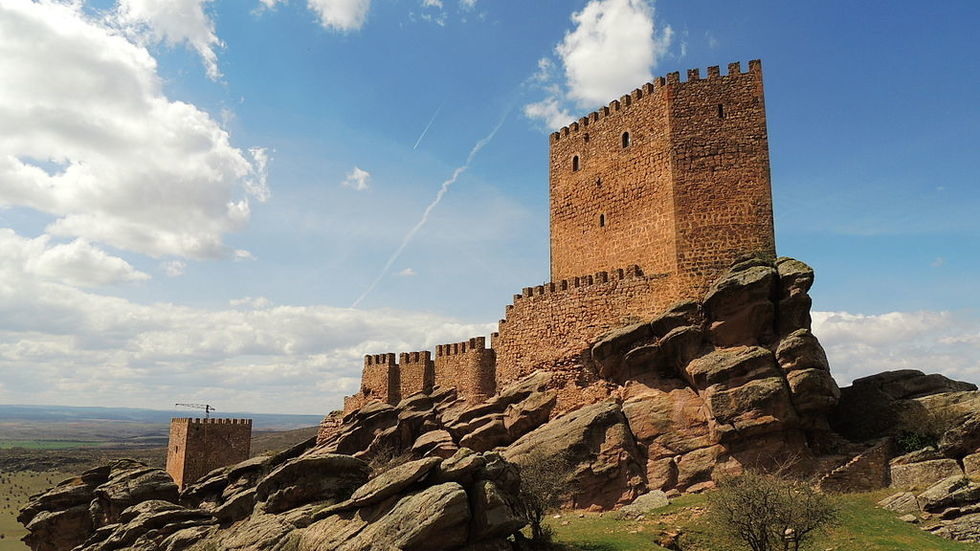
 1
Like
Published at 12:46 PM Comments (0)
1
Like
Published at 12:46 PM Comments (0)
Five Must-See Lakes in Spain
Thursday, April 25, 2024
Spain is a country celebrated for its rich culture, historical edifices, and breathtaking landscapes. Yet, beyond its bustling cities and iconic landmarks lies a realm of serene beauty found in its stunning lakes and lagoons. From the northern realms of Catalonia to the southern expanse of Andalusia, Spain's aquatic treasures offer both a tranquil escape and an exhilarating adventure for those who venture to explore them. Embark on a journey to discover the awe-inspiring lakes and lagoons of Spain, showcasing nature's splendour and offering moments of peacefulness amidst the rush of daily life.
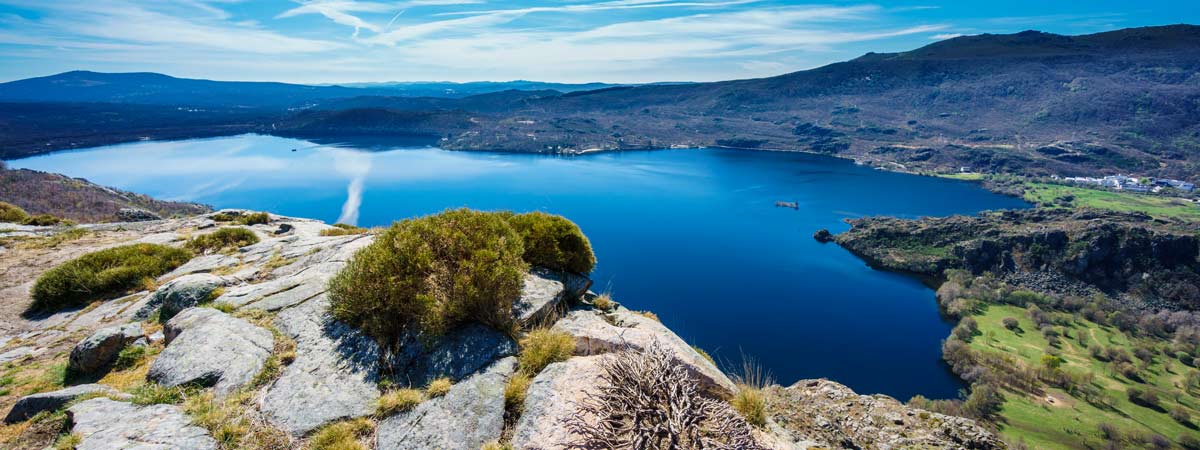
1. Lago de Sanabria
Situated in the province of Zamora, the glacial marvel that is Lago de Sanabria stands as a testament to Spain's natural beauty. This pristine lake, positioned equidistant from both the northern region of Galicia and Portugal, presents an unparalleled natural landscape, ideal for those seeking solace from the bustling world. Just 12 km from the medieval village of Puebla de Sanabria, the lake is accessible by car and perfect for hiking enthusiasts, water sports aficionados, and beachgoers. However, be advised, the water can be refreshingly chilly even on sunnier days.
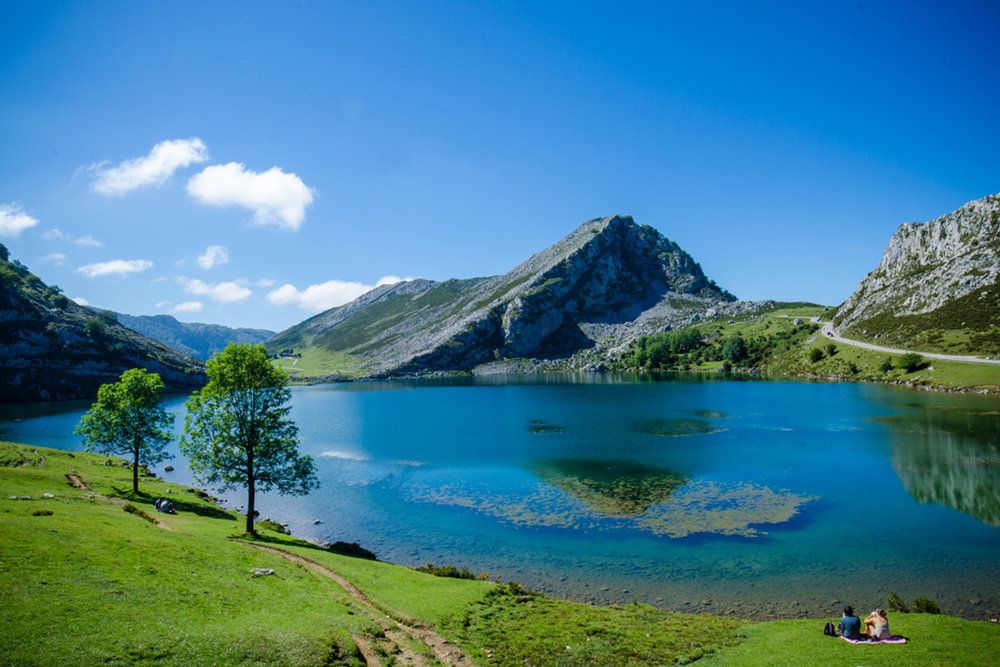
2. Lagos de Covadonga
In the heart of the Picos de Europa mountain range in Asturias, the Lagos de Covadonga comprises three magnificent lakes - Enol, Ercina, and the seasonal Bricial. Famous for their appearance in the Vuelta a España cycling race, the lakes offer breathtaking views regardless of the weather, with sunny days reflecting the mountains in the clear waters and foggy days presenting an ethereal beauty. To fully experience these lakes, take the bus to avoid parking woes and stay until sunset for a truly magical view.
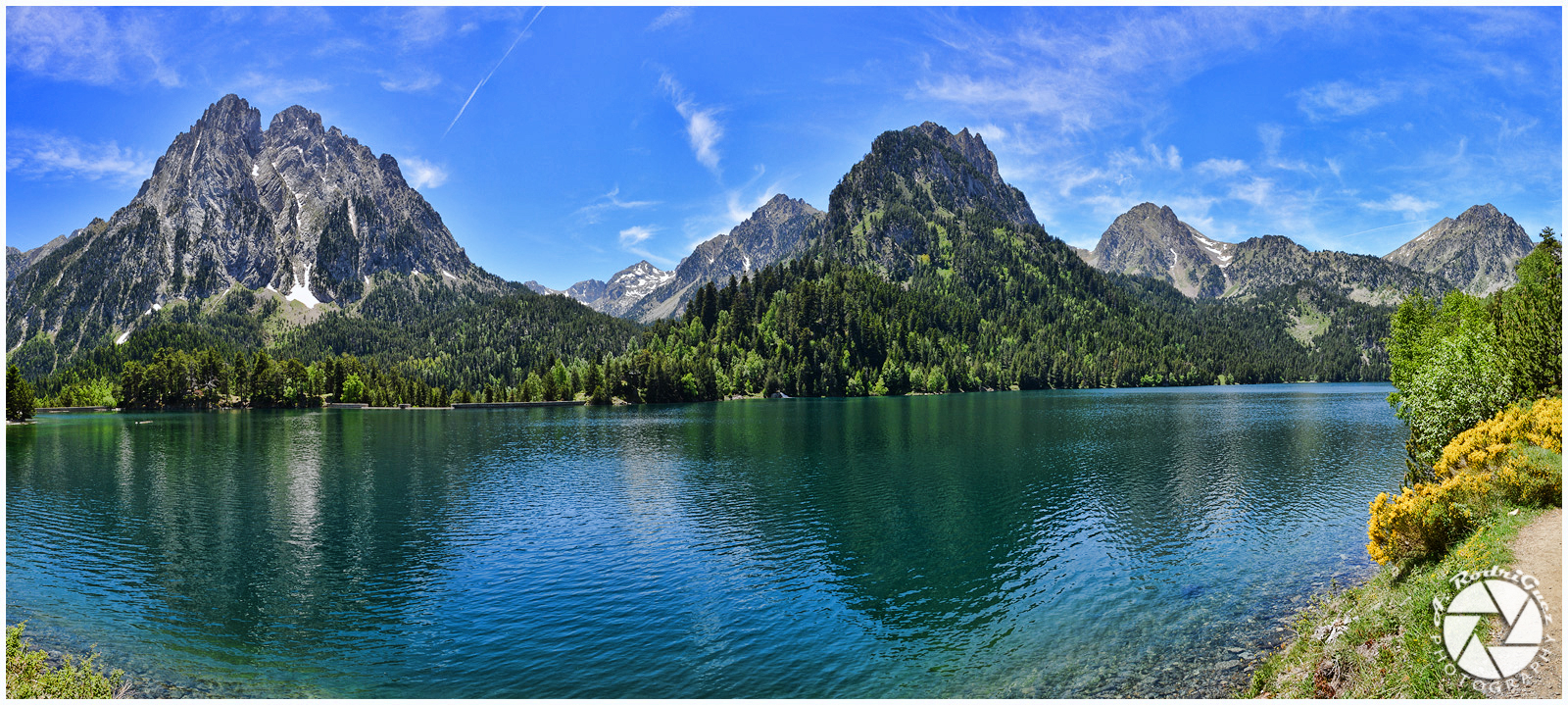
3. Lago San Mauricio
Nestled within the Aigüestortes National Park in Lleida, the Lake of San Mauricio is encircled by towering peaks that reach up to 3,000 meters. The lake's serene ambiance, particularly stunning in the frost of winter, is a heart-stealer for those who cherish nature's tranquillity. Preparing for a visit involves a scenic hour walk from the Prat de Pierró car park, a journey well worth the effort for the breathtaking views it offers.
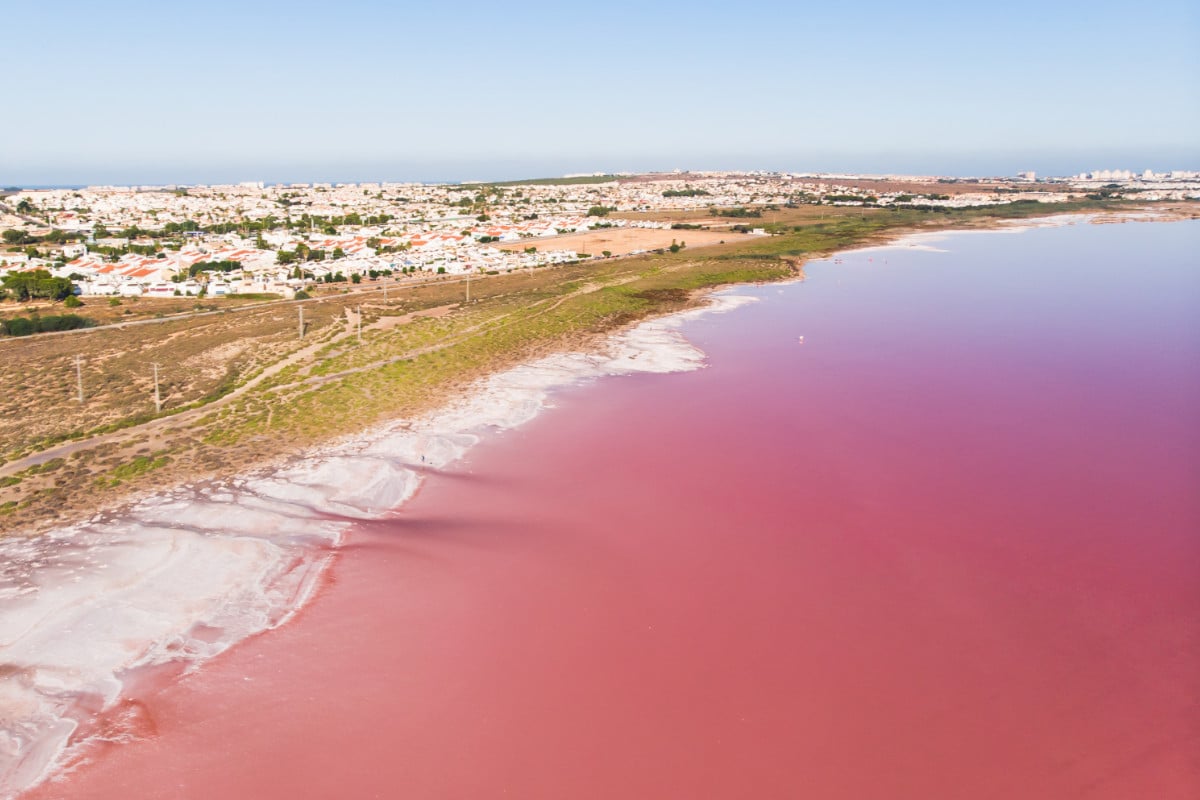
4. Laguna Rosa
Close to Torrevieja in Alicante, the Laguna Rosa, or the Pink Lagoon, is a sight to behold within the ‘Mata and Torrevieja Lakes Nature Reserve’. Its unique pink hue, a result of the high salt concentration, offers a photogenic landscape that changes from a lunar-like terrain to a peaceful oasis through the day. While tempting, swimming here requires caution due to the water's salinity and shallow depth, making it more suitable for a relaxing lie-down rather than a swim.
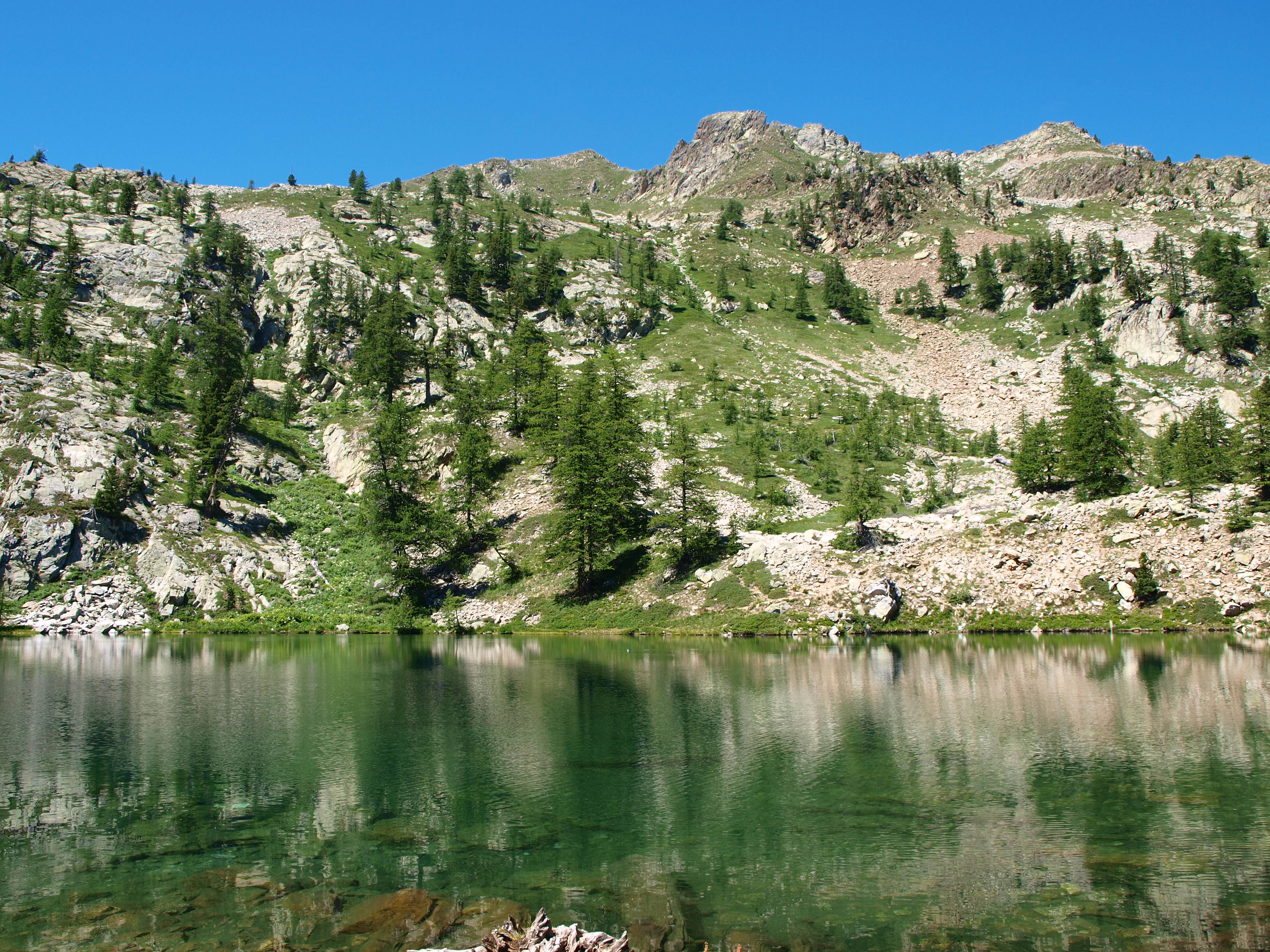
5. Martel Lake
Hidden beneath the surface in the renowned Caves of Drach on Mallorca, Martel Lake stands out with its turquoise waters that flow through one of the world's most beautiful caves. Named after the French speleologist Édouard-Alfred Martel, the lake hosts classical music concerts in a natural amphitheatre like no other, making it an unforgettable Spanish experience.

The Grandest of Them All: Lake Banyoles
The largest lake in Spain, Lake Banyoles, is located in Catalonia, near Girona. This natural wonder, providing a wide variety of activities like rowing, canoeing, and swimming, hosted the rowing events during the 1992 Barcelona Olympic Games. Its picturesque scenes are a magnet for tourists seeking beauty and adventure.
With an array of stunning lakes, Spain offers plenty of options for swimming in breathtaking natural surroundings. Each lake provides a unique experience with its own charm. Whether it's engaging in water sports or enjoying a family swim, Spain's lakes cater to all tastes and preferences.
Spain's lakes and lagoons are more than just water bodies; they are sanctuaries of peace, adventure, and natural beauty waiting to be explored. As you plan your next escape, remember these hidden treasures that promise not just a journey, but a discovery of serenity and awe-inspiring landscapes.
 2
Like
Published at 9:22 PM Comments (3)
2
Like
Published at 9:22 PM Comments (3)
Medieval Villages in the Valencian Community
Friday, April 19, 2024
The Valencian Community fuses nature, history and culture throughout its entire territory. And being able to walk through the villages that take you back in time is not so difficult to find. Alicante, Valencia and Castellón are full of places that mark and remind us of their historical past. Walls, castles and fortresses are just some of them. Here are 5 options I wanted to share with you where you can stop and enjoy Spain as it was in the Middle Ages.
Culla (Castellón)
In the province of Castellón, we find one of the most charming corners of the Valencian Community, Culla. With a population of only 500 inhabitants, this beautiful municipality is surrounded by a privileged natural environment. Its wild nature and peaceful atmosphere make you travel through history while strolling its medieval streets. Its characteristic style of cobbled houses, the ruins of the Arab Castle, the Granary of the Commander or the Parish Church of El Salvador help you immerse yourself in times gone by.
The nature that surrounds Culla also allows for a wide variety of outdoor activities. For this reason, taking excursions to explore its beautiful scenery or visiting the Miner del Maestrat Park is a must. Likewise, you should not forget to try some of the most typical dishes of l’Alt Maestrat such as the "Pot of the Maestrat - Olla del Maestrat" or its heavenly "Coca".
Xàtiva (Valencia)
Xàtiva is one of those cities that leaves you spellbound as you go through each of its corners. Through its monuments, you can appreciate the passage of history. It was declared an episcopal headquarters at the time of the Visigoths, living its period of maximum cultural splendour during the Muslim rule. Xàtiva was also the birthplace of the painter José Ribera, known as 'El Españoleto', and of two popes from the Borja dynasty. Its precious hiding places and the majesty of its Castle will transport you back to the middle ages. Its old town was declared a Historic-Artistic Site in 1982.
Chulilla (Valencia)
In the interior of the Valencian Community, the beautiful town of Chulilla is located. The magic of this place lies in its magnificent location in the middle basin of the Turia river. The vast amount of water that runs through this area has made it well-known for hosting many of the trails which make up the "Ruta del Agua". In it, you can enjoy endless walks such as the Ruta de Los Calderones or the Charco Azul. In addition, the beauty of its narrow and steep streets will help you savour medieval times.
Guadalest (Alicante)
The province of Alicante combines not just sea but also mountains. It is the fourth most mountainous province in Spain. And thanks to this, we can find places as spectacular as the town of Guadalest. Located on a cliff at an altitude of 595 meters, El Castell de Guadalest has managed to maintain the essence and the most typical features of the inland Alicante towns. Its natural enclave is very picturesque since its houses are embedded in the rock and the views it offers are of the extensive valley below. Its beauty and charm earned it the award of Historic-Artistic Site in 1974.
This village also offers a series of very varied cultural activities. You can go to the Casa Orduña, a noble house from the 17th century nicknamed the Casa Gran; or stop by one of the curious museums, such as the Museum of Nativity scenes and Dollhouses, the Museum of Microminiatures, the Museum of Salt and Pepper Shakers or the Museum of the Collection of Historical Vehicles.
Morella (Castellón)
The province of Castellón is home to one of the most incredible places in the entire Valencian territory: Morella. The city that was built mainly at the foot of the Castle, located at an altitude of more than 1,000 meters, continues to maintain its medieval aspect. In addition, its fortress that still preserves the main square, the cistern and the Pardals tower, is considered today to be one of the most important treasures of the Castellón territory.
No matter what time of year you drop by the Maestrazgo, this town with about 2,500 inhabitants transports you back in time. Be sure not to forget to visit the church Arciprestal Santa María La Mayor, a Gothic jewel reflecting the power of this location centuries ago.
 2
Like
Published at 10:23 PM Comments (1)
2
Like
Published at 10:23 PM Comments (1)
Why are Ribera del Duero Wines So Good?
Wednesday, April 3, 2024

The simple answer is the terroir. It has often been said that vines love to suffer and the best wine comes from grapes that have had to struggle. There is a lot of truth in this. The deeper and more widely a vine has to spread its roots looking for nourishment the greater the mineral subtleties the grapes will have. Too easy a supply of water leads to bloated grapes that dilute flavours. So, small berries, laden with aromatic compounds and flavorful minerals but not overfilled with water are what winemakers prefer to use to make their best wines with. Generous amounts of organic matter in topsoil tend to contain richness and also they retain water, keeping vines happy and stifling their need to look deeper for sustenance. Hence, poor and often stony soils and subsoils are a preferred option for vineyards.
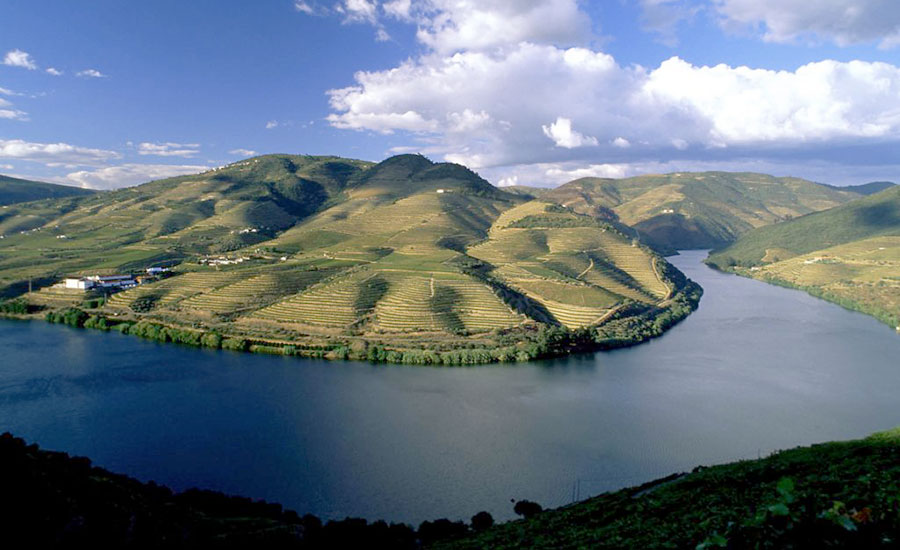 Ribera del Duero estates are located on geological strata that were deposited in the Quaternary period (the past 2.6 million years) on the floodplain of the Duero River as it passes through the spot which today is Aranda de Duero. Not long ago, this plain suffered from periodic floods as the river found its way westwards from north-central Spain to its estuary in north-western Portugal where it meets the Atlantic Ocean. These floods carried away much of the richness of the soil and left behind stones, sands and some clays. Today, the Duero is regulated by a series of dams and weirs to avoid catastrophic flooding. The vineyards that follow the river are situated between 12 to 19 meters (40-60 feet) above the level of the river, which means its moisture is completely independent of the Duero river itself. Ribera del Duero estates are located on geological strata that were deposited in the Quaternary period (the past 2.6 million years) on the floodplain of the Duero River as it passes through the spot which today is Aranda de Duero. Not long ago, this plain suffered from periodic floods as the river found its way westwards from north-central Spain to its estuary in north-western Portugal where it meets the Atlantic Ocean. These floods carried away much of the richness of the soil and left behind stones, sands and some clays. Today, the Duero is regulated by a series of dams and weirs to avoid catastrophic flooding. The vineyards that follow the river are situated between 12 to 19 meters (40-60 feet) above the level of the river, which means its moisture is completely independent of the Duero river itself.
The characteristics of these soils allow the grapes to ripen very well since the sun’s heat is retained during the day by numerous boulders, rocks and gravels on and near the surface. The effect on the grapes is to have solar heat from above and reflected or radiated heat from below. Another advantage is that these surfaces increase the colour of the grape berries by reflecting light upwards off the stones. Grapes develop darker skins to protect the genetic material in their seeds from potentially destabilising solar radiation. This effect promotes phenolic maturation, synthesizing polished and silky tannins which form the characteristic backbone of this vineyard’s wines.
The abundance of boulders and gravels also produces what is referred to as a quilting effect on the ground, avoiding the loss of too much moisture through evaporation, something that gives freshness and a naturally-balanced acidity to the wines. All this is reinforced by the altitude at around 800 meters (2,625 feet) above sea level. The higher the altitude, the thinner the layer of the protective atmosphere above the vines, hence the darker the grape skins.
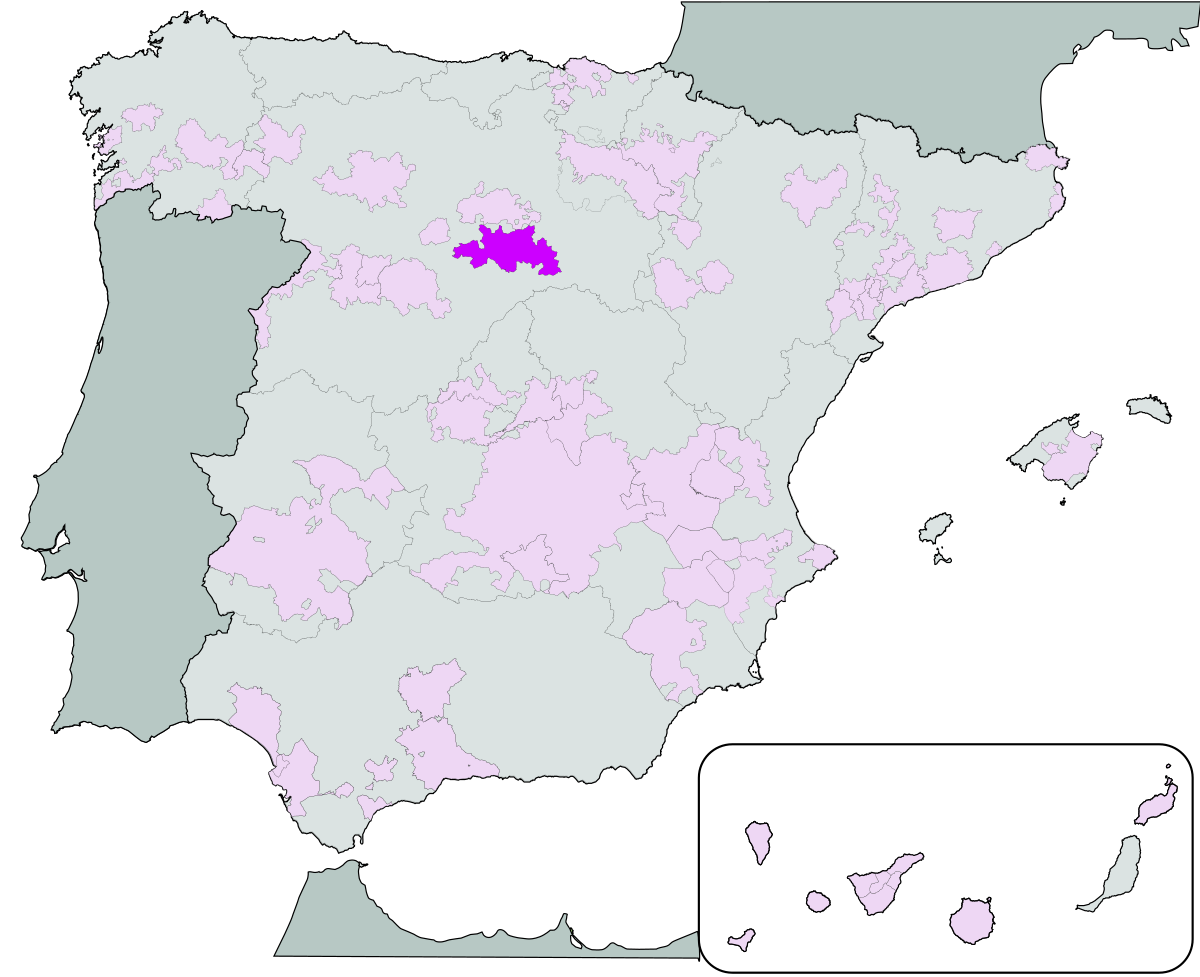 The altitude also causes a pronounced temperature variation between day and night, something that stimulates the vines. This temperature fluctuation is also advantageous during the ripening period of the fruit because it causes an increase in fruit size during the cool of the night as the vine absorbs water and a decrease during the day as the heat of the sun and stones promotes water evaporation through the vine’s leaves. This incites a further thickening of the grape skins which enhances the synthesis of anthocyanins, substances responsible for skin colour. The altitude also causes a pronounced temperature variation between day and night, something that stimulates the vines. This temperature fluctuation is also advantageous during the ripening period of the fruit because it causes an increase in fruit size during the cool of the night as the vine absorbs water and a decrease during the day as the heat of the sun and stones promotes water evaporation through the vine’s leaves. This incites a further thickening of the grape skins which enhances the synthesis of anthocyanins, substances responsible for skin colour.
A relatively high limestone content in the soils lends structure and minerality to the wines. Although limestone on its own is too tough for roots to penetrate, its soils are rich in what is known as plant-accessible calcium carbonate, the principal chemical component of limestone. Scientists have found that calcium is vital for the formation of disease-resistant grape berries. Grapes tend to concentrate calcium in their skins where they help in the formulation of strong cell walls that maintain skin cohesion and hence resistance to degradation. Vines that grow in soils that have less available calcium tend to prioritize internal cell growth over skin vitality, making grapes more susceptible to fungal diseases.
Terroir might sound like that stuff that gets stuck to your boots when you walk through a vineyard, but it is much more than that. It encompasses all the factors that can affect a grape’s growth and wellbeing.
 2
Like
Published at 10:08 PM Comments (0)
2
Like
Published at 10:08 PM Comments (0)
Spam post or Abuse? Please let us know
|
|